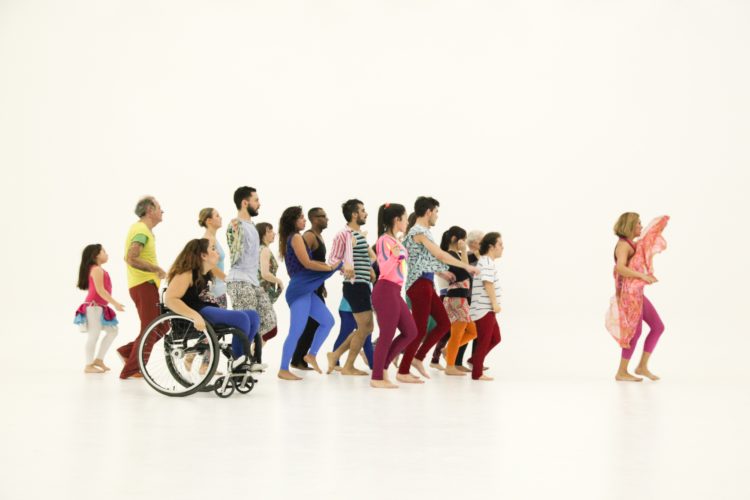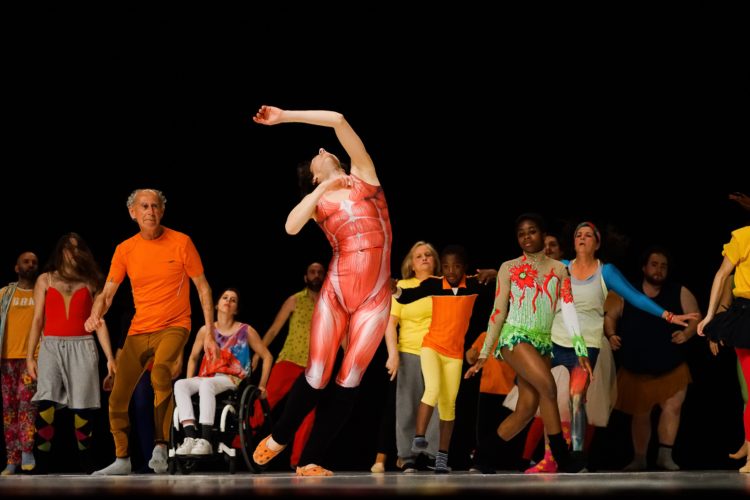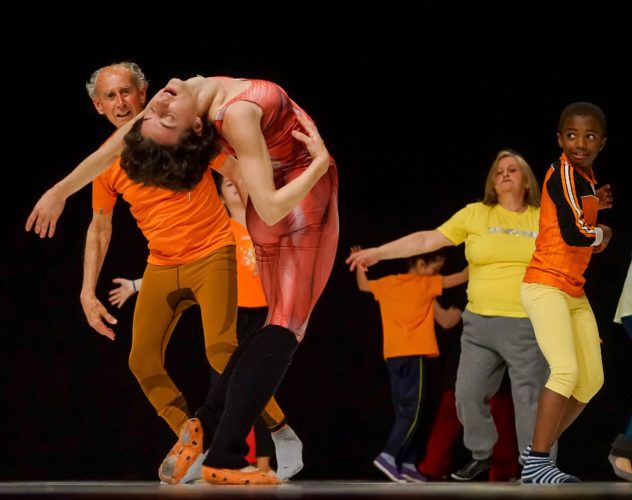In 2007 I saw Jérôme Bel for the first time – one of the most anarchic contemporary choreographers – at the National Center for Dance in Bucharest. The French choreographer had been invited back then to perform two shows – Jérôme Bel, from 1995 and The Last Performance (a lecture), 2004 – which fundamentally marked the encounter with an artistic language cleaned of the surplus of artificiality, profoundly reflexive towards the political significance of the body, intensely engaged and inspiring in relation to the analysis of what makes a show become a show.
During a period in which the CNDB was functioning in the logic of exploring the intersections of reception – they were counting on the understanding of dance in relation with proximal fields which reveal its deeper meanings -, inviting Jérôme Bel was part of an artistic vision which intensified the climate for debates on dance that is unattached to the production of virtuosity and a normalized body. Jérôme Bel – a thinker of movement, preoccupied with correctly dosing the elements that make up a performance, an analyst of the conceptualization of a show and its fragile and flexible components – was becoming a necessary artist in a local choreographic context where there was an urgent need to interrogate the political body, the relation between discourse and movement on stage, choreographic minimalism, dance that calls to resistance mentality when faced with socially annihilated contexts, etc. With the presence of his shows in Romania, Jérôme Bel had created the frame for deepening the knowledge on choreographic language with critical resorts.
Jérôme Bel permeably politicizes the body. The body is a deposit for writing capitalist slogans which the artist ably highlights (shirtology). The body becomes inscribed with the marks of a greedy industry (Christian Dior) in lipstick, reducing it to performing clichés aspiring to fit into the imposed beauty standards. The body becomes a sign in the ground zero of a dance show’s grammar (Jérôme Bel) where the source of light on stage is reduced to a light bulb, where music is focused into one song, where the naked bodies of dancers do not resort to anything spectacular. Jérôme Bel “tightens” the show as much as possible, avoiding the temptation of adding. Bel radicalizes the scenic presence and essentializes the codes of the spectacle, opting each time for cluttering captivity in the field of tested practices. For the choreographer, it’s much more important to develop new theories of performativity instead of remaining in frames he already conceptually eroded. In Bel’s shows, the body is a double opposing discourse: opposing the dominant political dynamics and opposing recurrent aesthetic dynamics which, on one hand, impose the ecstatic regime of easy entertainment or the art regime for the few chosen ones. He always questions the limits, the fixed frames, the comfortable lightness, the founding ruptures of positioning, challenging closed aesthetics in their own recycling and “the abundance of poor” critique. For Bel, the unprovoked spectator who cannot problematize what he sees is a flat spectator: “spectators are essential in my artistic practice. They are my goal. Everything converges towards them. They are those that receive all the forces and energies that I set into motion in order to touch them, to transform them, to show them there are other forms of existence, that art exists in order to put forward solutions for the grievances of our lives, for society’s injustice, for the inequalities that destroy our possibilities of being happy”[1].
In 2017, The National Center for Dance brings to Bucharest Gala, a show which, together with Disable Theatre, marks an essential transformation in choreographer Jérôme Bel’s becoming which can be associated with the changes of the center. Gala is about the non-hierarchic, mobilizing and emancipating access to the stage which is normally confiscated by legitimized virtuosity. It is about an homage to dance by all who take part in dancing regardless of education, the level of choreographic culture, ability. It is about the equality of bodies on a stage where children, people who cannot get out of their wheelchairs, elderly people, professionals and non-professionals explore together unlimited territories of movement.
It is about the open potential of dance which does not set exclusive frames of belonging. It is not based on a closed circle for high art “calls”. Gala, a show born from workshops with non-professionals is, first and foremost, a celebration of extended dancing, inspiring dancing for all categories, a dance that marginalizes no one, a dance revealing through its power to animate collective energies. Gala is about the solidarity of the bodies on stage.
[1] “Every dance is relating to the world”, an interview by Philippe Noiesette with Jérôme Bel for Festival d’Automne à Paris magazine, September – December 2015, page 27.
Gala and the CNDB Awards are on December 13th at Odeon Theatre.
POSTED BY
Mihaela Michailov
Mihaela Michailov (b.1977) is a playwright and performing arts critic. She teaches at the "I.L.Caragiale" National University of Drama and Film in Bucharest. Her plays have been translated into Bulgar...
centrulreplika.com




Comments are closed here.